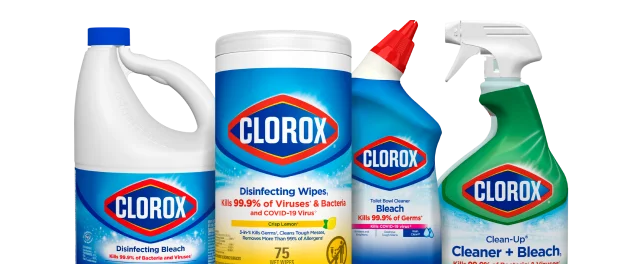Does Bleach Kill E. Coli on Surfaces?

Does bleach kill E. coli? Find out whether or not bleach kills E. coli on surfaces and how to properly clean your home to prevent the spread of E. coli.
How to Help Prevent the Spread of E. coli
Escherichia coli (abbreviated as E. coli) are a large group of diverse bacteria that lives in the lower intestine of people and animals. Although most E. coli strains are harmless and actually beneficial for your gut’s health, others can make you sick when digested. These harmful forms of E. coli bacteria most commonly cause symptoms such as severe stomach cramps, diarrhea, nausea and vomiting. In other cases, the infection can cause urinary tract infections, respiratory illness and pneumonia.1
E. coli infections are contracted through consumption of contaminated food, unpasteurized or raw milk, water that hasn’t been disinfected, or contact with infected people. Since it is highly contagious, the Centers for Disease Control and Prevention (CDC) recommends that an infected person carefully washes hands often and thoroughly, especially when coming in contact with another person. According to health care specialists at UCSF Medical Center, symptoms from an E. coli infection should subside after five to 10 days.
Tips at Home
- Keep materials and surfaces clean. Prevent cross-contamination in the kitchen where food is being prepared by thoroughly washing hands, dishes, cutting boards and utensils, and cleaning and disinfecting counters and surfaces after they touch raw meat.
- To disinfect kitchen tools and surfaces, add ⅓ cup Clorox® Disinfecting Bleach to 1 gallon of water and thoroughly wet surface with the solution. After allowing it to remain on the surface for 6 minutes, rinse with clean water and dry.
- To sanitize plastic cutting boards, wash or rinse with liquid dishwashing detergent and water. Then soak in a solution using 2 teaspoons Clorox® Disinfecting Bleach per gallon of water. Let stand 2 minutes, then air dry. No rinsing is required
- Choose the right products. Select disinfecting products that are Environmental Protection Agency (EPA)-registered and have kill claims for E. coli bacteria, such as Clorox® Disinfecting Bleach or Clorox® Disinfecting Wipes.
- Practice proper hygiene. Always wash your hands thoroughly with antibacterial soap and water after using the bathroom and before or after preparing or eating food.
- Ensure food safety in the kitchen. Avoid serving or eating raw or pasteurized meat. If you’ve had contact with uncooked meat while cooking, wash hands and surrounding surfaces and materials thoroughly before and after coming in contact. Use a thermometer to verify that all meat is cooked thoroughly, to a temperature of at least 160°F (70˚C).



